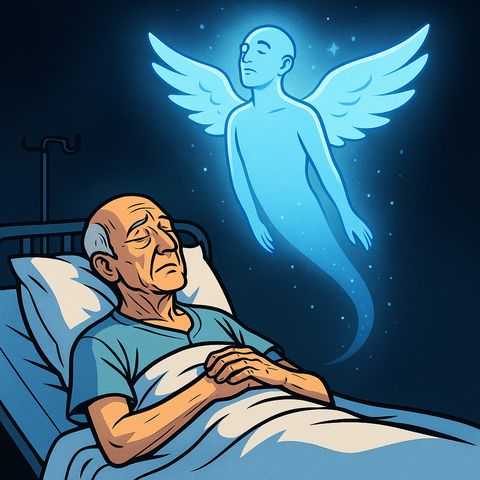
Timeline of Afterlife Doctrines
Jesus’s simple teaching about resurrection transformed dramatically when early Christian thinkers merged Greek philosophical ideas about the immortal soul with biblical concepts.
This merger – though resisted by some early teachers – would profoundly shape Western Christianity’s view of death and the afterlife. Through the Middle Ages, these ideas developed into elaborate systems involving heaven, hell, and purgatory, complete with detailed maps of the afterlife and complex rules about salvation.
The Protestant Reformation challenged many of these medieval developments, but the Greek concept of the immortal soul remained deeply embedded in most Christian traditions. Today, we’re seeing another shift as many Christians question traditional views about hell and eternal punishment, while still maintaining hope in some form of life after death.
Why important for us
It’s important to understand the development of these ideas, as it may be tempting to insert views into the text that were not originally there if we, as translators, are not aware when certain ideas were developed.
Timeline
Greek Classical Period
Greek Philosophical Views of the Soul
Plato (428-348 BC) and other Greek philosophers developed sophisticated ideas about the soul’s immortality that would later influence Christianity:
Key concepts:
- Soul (psyche) as an immortal, immaterial essence
- Body seen as a temporary ‘prison’ for the soul
- Death as liberation of the soul from physical constraints
- Belief in soul’s pre-existence before birth
- Hierarchy placing spiritual above physical reality
These ideas contrasted sharply with traditional Jewish beliefs, which emphasized bodily resurrection and viewed humans as unified beings rather than split between body and soul.
Pre-Christian Era
Evolution of Breath into Spirit
The concept of ‘spirit’ underwent a transformation from concrete to abstract meaning:
Hebrew ruach (רוּחַ):
- Originally meant physical ‘breath’ or ‘wind’
- Gradually gained meaning of life force
- Later developed sense of personal spirit
- Could refer to emotional states
- Eventually could mean supernatural beings
Greek pneuma (πνεῦμα):
- Similarly began as ‘breath’ or ‘wind’
- Developed to mean vital force or life principle
- Philosophers used it for cosmic force/energy
- Stoics saw it as divine reasoning force
- Later used for personal spirit/soul concept
This linguistic evolution mirrors the gradual shift from seeing ‘spirit’ as simply breath/life force to viewing it as a distinct, personal entity – a development that would later influence Christian soul doctrine.
AD 30-33
Jesus Teaches About Resurrection
Jesus speaks primarily of a future resurrection of the dead, using phrases like ‘in the resurrection’ and ‘resurrection at the last day.’ He rarely mentions immediate heavenly reward, instead focusing on the Kingdom of God coming to Earth.
Key statements:
- ‘In the resurrection they neither marry nor are given in marriage’ (Matthew 22:30)
- ‘At the resurrection of the righteous’ (Luke 14:14)
- ‘I will raise them up at the last day’ (John 6:40)
- ‘Your brother will rise again’ (John 11:23)
- ‘The Kingdom of God is at hand’ (Mark 1:15)
AD 50-65
Paul’s Letters Address Death and Resurrection
Paul writes extensively about resurrection, describing it as the Christian hope. He portrays death as a ‘sleep’ while awaiting resurrection, though some passages suggest an immediate presence with Christ after death.
Key texts:
- 1 Thessalonians 4:13-18 (dead ‘sleeping’ until resurrection)
- 1 Corinthians 15 (detailed defense of bodily resurrection)
- 2 Corinthians 5:1-10 (some view as suggesting immediate heavenly existence)
- Philippians 1:23 (desire to ‘be released [from this body] and to be with Christ’)
AD 90-110
Early Church Letters on the Afterlife
Early Christian letters show a focus on bodily resurrection rather than immediate heavenly reward. The First Epistle of Clement uses the phoenix myth as an analogy for resurrection, while Ignatius of Antioch speaks of ‘attaining to God’ after death.
Key developments:
- Emphasis remains on future resurrection
- No clear doctrine of immediate heavenly reward
- Martyrs possibly given special status after death
- No developed concept of hell
AD 125-175
Greek Philosophy Influences Christian Soul Doctrine
Justin Martyr marks a pivotal shift by introducing Greek philosophical concepts about the soul’s immortality into Christian thought. As a former Platonist philosopher turned Christian, he merges Plato’s idea of the naturally immortal soul with Christian teachings.
Key developments:
- First major integration of Greek soul doctrine into Christianity
- Adoption of Plato’s concept of the soul as inherently immortal
- Teaching that righteous souls await resurrection in a ‘better place’
- Blend of Biblical resurrection hope with Greek philosophical dualism
- Introduction of the idea that souls are conscious after death
This merger of Greek and Christian thought would profoundly shape Western Christianity’s understanding of death and the afterlife, though some early teachers like Irenaeus would resist it.
AD 180-200
Irenaeus Challenges Greek Soul Doctrine
Irenaeus strongly opposes the growing influence of Greek philosophy on Christian teaching about the soul. Unlike Justin Martyr, he insists that souls are not naturally immortal but depend on God for continued existence.
Key positions:
- Souls are not naturally immortal but receive immortality as a gift from God
- The dead await resurrection in an intermediate state
- Warns against mixing Greek philosophy with Christian doctrine
- Physical resurrection is essential, opposing Greek idea of soul’s superiority
- Millennium on Earth will precede final judgment
AD 200-220
Tertullian Develops Hell Doctrine
Tertullian provides the first detailed description of hell as a place of eternal torment. He combines biblical imagery with concepts from Greek and Roman underworld myths.
Key developments:
- Detailed description of hell’s torments
- Argument for eternal conscious punishment
- Concept of temporary purifying punishment
- Prayer for the dead to ease their suffering
AD 200-250
Clement of Alexandria Embraces Greek Philosophy
Clement of Alexandria further integrates Greek philosophy with Christian theology, arguing that philosophy was given to the Greeks by God as their own form of divine revelation.
Key developments:
- Systematic use of Platonic concepts in Christian theology
- Defense of Greek philosophy as preparation for Christianity
- Development of more sophisticated soul doctrine
- View of death as spiritual advancement
- Integration of Greek virtue ethics with Christian teaching
AD 240-245
Origen’s Universal Salvation Theory
Origen of Alexandria develops his controversial theory of universal salvation (apokatastasis), suggesting that all souls, even demons, will eventually be purified and saved.
Key concepts:
- Temporary nature of hell
- Progressive purification after death
- Multiple worlds and ages of restoration
- Final salvation of all beings
AD 250-300
Growing Divide Over Soul Doctrine
A significant split develops between Eastern and Western Christian thinkers on the soul’s nature:
Western trend (Latin-speaking churches):
- Increasing acceptance of soul’s natural immortality
- Greater emphasis on individual soul’s destiny
- Development of juridical (law-court style) views of afterlife:
- Soul faces immediate judgment at death
- Specific punishments for specific sins
- Clear categories of reward and punishment
- Emphasis on divine justice and judgment
Eastern trend (Greek-speaking churches):
- More emphasis on resurrection
- View of immortality as divine gift rather than natural quality
- Focus on whole person rather than just soul
- Less rigid views about immediate post-death state
AD 370-390
Gregory of Nyssa’s Purifying Fire
Gregory of Nyssa develops the concept of purifying fire after death, an important predecessor to the doctrine of purgatory. He suggests this fire cleanses souls rather than purely punishing them.
Key developments:
- Fire as purification rather than punishment
- Progressive spiritual development after death
- Support for universal salvation
- Prayer for the dead’s purification
AD 413-426
Augustine Establishes Soul Doctrine and Traditional Hell
Augustine of Hippo, deeply influenced by both Platonism and Christianity, creates an influential synthesis that becomes standard in Western Christianity. He writes extensively about hell in City of God, establishing what becomes the traditional Western view of eternal conscious torment.:
Key aspects:
- Souls are created by God but inherently immortal once created
- Soul and body are both good but soul is superior
- Souls are conscious between death and resurrection
- Hierarchy of soul over body becomes standard doctrine
- Merges Greek philosophical and Biblical concepts
- Eternal conscious torment for the unsaved
- Rejection of universal salvation
- Limited purification for imperfect Christians
- Prayers and offerings benefit the dead
This Augustinian synthesis would dominate Western Christian thought for over a thousand years, effectively standardizing the Greek philosophical view of the soul within Christian theology.
AD 590-604
Gregory the Great Systematizes Purgatory
Pope Gregory I systematizes early ideas about post-death purification into what would become purgatory doctrine.
Purgatory was conceived as a temporary state or place where souls undergo purification after death before entering heaven. Think of it as a spiritual ‘cleaning station’ – not quite heaven, not quite hell, but a middle state where souls are cleansed of remaining sins.
Key developments:
- Detailed description of purgatorial fire as cleansing rather than purely punishing
- System of prayers and masses for the dead to shorten their time in purgatory
- Classification of sins requiring purification (venial sins vs. mortal sins)
- Stories of souls appearing to request prayers for their release
- Teaching that most Christians would need some purification before entering heaven
This doctrine addressed a key theological question: what happens to people who die as imperfect Christians, or who die without being baptized (such as newborn babies)? The answer: they go to purgatory for ‘cleansing’ before entering heaven.
AD 1054
The Great Schism Reveals Eastern-Western Differences
The Great Schism between Eastern and Western churches reveals different approaches to the afterlife. The Eastern Orthodox Church rejects the Latin concept of purgatory and emphasizes:
- Prayer for the dead without purgatory doctrine
- Less defined state between death and resurrection
- No juridical view of punishment after death
- Rejection of indulgences
- Focus on gradual purification rather than punishment
- Less detailed speculation about heaven/hell geography
AD 1095-1099
First Crusade Offers Death Benefits
Pope Urban II promises complete remission of sins (plenary indulgence) to crusaders who die in battle, establishing a precedent for the Church offering specific afterlife benefits.
Key developments:
- Death in crusade guarantees heaven
- No purgatory for crusaders
- Indulgences linked to military service
- Church’s power over afterlife destiny
AD 1170-1200
Development of Indulgence System
The systematic granting of indulgences develops, offering remission of temporal punishment due for sins. Initially tied to pilgrimages and crusades, the system gradually expands to include monetary donations.
Key aspects:
- Quantified time off purgatory
- Connection to monetary donations
- System of partial and plenary indulgences
- Extension to dead souls in purgatory
AD 1215
Fourth Lateran Council Defines Purgatory
The Fourth Lateran Council provides the first conciliar definition of purgatory and establishes annual confession as necessary for salvation.
Key declarations:
- Formal definition of purgatory
- Necessity of confession for salvation
- Church’s power over forgiveness
- Role of priests in absolution
AD 1308-1320
Dante’s Divine Comedy Shapes Popular Afterlife Imagery
Dante Alighieri's Divine Comedy, particularly the Inferno, provides vivid descriptions of hell, purgatory, and heaven that profoundly influence Western Christian imagination about the afterlife.
Key contributions:
- Nine circles of hell with specific punishments
- Seven terraces of purgatory
- Nine spheres of heaven
- Detailed geography of the afterlife
- Integration of classical and Christian imagery
- Popular understanding of contrapasso (punishment fitting the sin)
While not official doctrine, Dante’s imagery becomes deeply embedded in Christian culture and shapes how many Christians envision the afterlife for centuries to come.
AD 1343
First Official Price List for Indulgences
Pope Clement VI officially sanctions the first detailed price list for indulgences, establishing specific monetary values for different levels of forgiveness and time off purgatory.
Key aspects:
- Fixed prices for different sins
- Graduated scale of indulgences
- Official papal authorization
- Commercial aspect of salvation
AD 1476
First Indulgences for Souls in Purgatory
Pope Sixtus IV declares that indulgences can be applied to souls already in purgatory through special papal decree. This dramatically expands the market for indulgences.
Key developments:
- Extension to dead souls
- Concept of treasury of merit
- Family obligation to purchase indulgences
- Increased commercialization
AD 1517
Luther Challenges Indulgence System
Martin Luther posts his 95 Theses, primarily attacking the sale of indulgences and underlying concepts about purgatory and papal authority over the afterlife.
Key challenges:
- Questions papal power over purgatory
- Attacks sale of indulgences
- Challenges treasury of merit
- Questions purgatory itself
AD 1517-1550
Protestant Reformation Changes Afterlife Doctrine
The Protestant Reformation leads to major changes in afterlife beliefs among reformers:
Lutheran views:
- Rejects purgatory and indulgences
- Maintains belief in conscious intermediate state
- Keeps traditional heaven/hell doctrine
- Emphasizes salvation by faith alone
Reformed/Calvinist positions:
- Predestination determines eternal destiny
- Immediate judgment after death
- No prayers for the dead
- Strong emphasis on eternal election/reprobation
Anabaptist beliefs:
- Some teach soul sleep until resurrection
- Reject infant baptism’s effect on salvation
- Emphasize living a Christian life over ritual ceremonies
- Various views on eternal punishment
AD 1520-1600
Catholic Counter-Reformation Reinforces Traditional Views
The Counter-Reformation sees Catholic authorities reinforcing traditional afterlife doctrines while reforming abuses:
Key developments:
- Reaffirms purgatory against Protestant denial
- Maintains prayers for the dead
- Reforms, but keeps, the indulgences system
- Emphasizes sacramental preparation for death
- Develops detailed ‘art of dying’ literature
- Strengthens link between last rites and salvation
AD 1545-1563
Council of Trent Reforms Indulgences
The Council of Trent reforms but maintains the doctrine of purgatory and indulgences, while abolishing their sale and many abusive practices.
Key reforms:
- Bans sale of indulgences
- Maintains purgatory doctrine
- Reforms practice of masses for dead
- Emphasizes spiritual over financial aspects
AD 1700s-1800s
Rise of Non-Traditional Afterlife Views
Several significant movements emerge with different views on death, resurrection, and eternal destiny:
- The Christadelphians (1844) - Teach soul sleep and conditional immortality, rejecting hell, and teaching that the Devil is not a literal being
- The Seventh-day Adventist Church (1863) - Teaches annihilation of the wicked rather than eternal torment
- Bible Students Movement (1870s) - Rejects hell doctrine, teaches resurrection to earthly paradise
- The Church of God (Seventh Day) (1863) - Emphasizes physical resurrection over immortal soul doctrine
- The Latter Day Saint movement (1830) - Teaches multiple degrees of heavenly glory and continued progression after death
- The Universalist Church expands - Teaching ultimate salvation for all souls
- The New Church (Swedenborgian) - Detailed descriptions of heaven and hell based on Emanuel Swedenborg’s visions
- Spiritualist movement gains popularity - Teaching direct communication with the dead
- Christian Science (1879) - Denies the reality of death altogether
These movements often faced significant opposition from mainstream churches but found growing acceptance during the religious freedom of the Second Great Awakening.
AD 1850-1900
American Civil War Influences Afterlife Beliefs
The massive casualties of the American Civil War lead to new perspectives on death and the afterlife:
Key developments:
- Growth of Spiritualism
- Emphasis on reunion with loved ones
- Less focus on hellfire preaching
- More comforting views of heaven
- Development of ‘Beautiful Death’ concept
- New funeral and mourning practices
- Growing interest in near-death experiences
- Challenge to traditional views of divine judgment
AD 1875-1925
Rise of Liberal Protestant Views
Liberal Protestantism develops new interpretations of traditional afterlife doctrines:
Key changes:
- Symbolic interpretation of hell
- Questioning of eternal punishment
- Focus on present-world salvation
- Social gospel emphasis
- Progressive revelation ideas
- Influence of modern psychology
- Integration with evolutionary thought
- More inclusive views of salvation
AD 1962-1965
Second Vatican Council Updates Teaching
The Second Vatican Council maintains traditional teaching on purgatory but emphasizes it as purification rather than punishment, while further reforming indulgence practices.
Key changes:
- Emphasis on purification over punishment
- Reform of indulgence practices
- More positive view of non-Catholic salvation
- De-emphasis of ‘temporal punishment’
AD 2000-Present
Modern Christian Views on the Afterlife
Recent surveys reveal a complex landscape of afterlife beliefs among modern Christians, often mixing traditional doctrines with contemporary interpretations:
United States (2022 Pew Research):
- 73% of Christians believe in heaven
- Only 62% believe in hell
- Growing acceptance of universal salvation (all will eventually be saved)
- 47% believe non-Christians can go to heaven
- Declining belief in eternal conscious torment
- Rising belief in annihilationism (souls are destroyed rather than tortured)
United Kingdom (2017 YouGov):
- Only 41% of Christians believe in life after death
- Belief in hell dropped to 32% among Christians
- Growing ‘Christian agnosticism’ about afterlife details
- Increased focus on this-worldly aspects of faith
Global Trends:
- Traditional beliefs strongest in Global South
- Western Christians increasingly reject eternal torment
- Growing acceptance of near-death experiences as evidence
- Rise of ‘therapeutic’ views of afterlife (focused on healing/reunion)
- Mixing of traditional Christian with New Age concepts
- Younger Christians more likely to:
- Question traditional hell doctrine
- Accept universal salvation
- View heaven as ‘relationship with God’ rather than place
- Reject body-soul dualism
These shifts represent one of the most significant changes in Christian afterlife doctrine since the Reformation, though official church teachings often remain more conservative than popular beliefs.
Timelines: Bible History
-

-
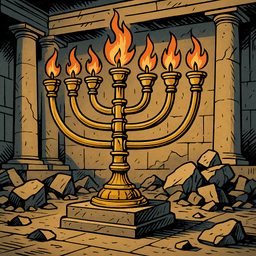
-
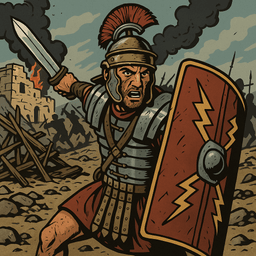
-

-
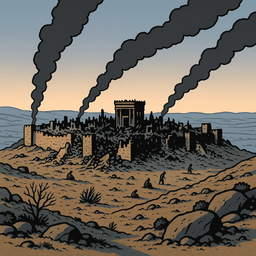
Timelines: Doctrines
-
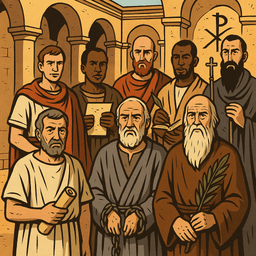
-
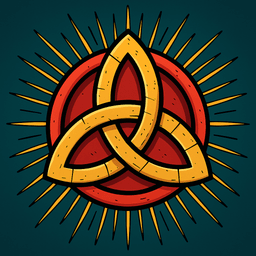
-
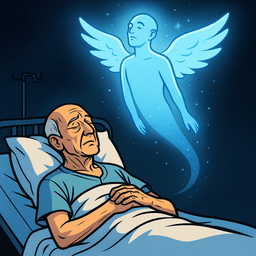
-
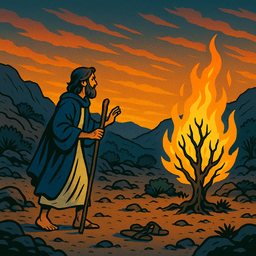
Timelines: Miscellaneous
-
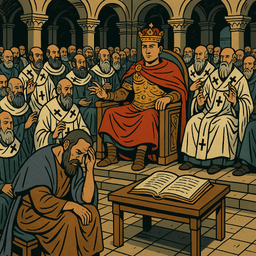
-
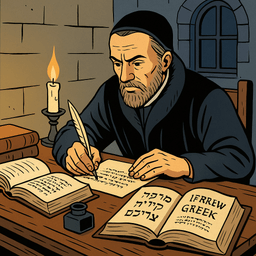
-
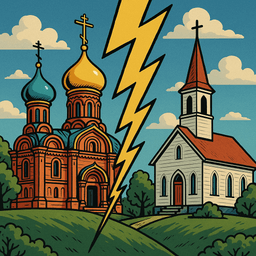
-
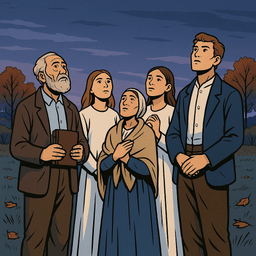
Also see our Articles index and our About section.